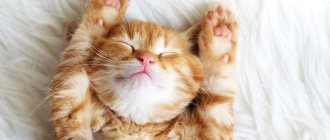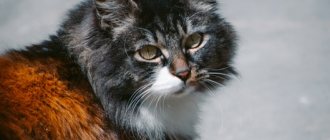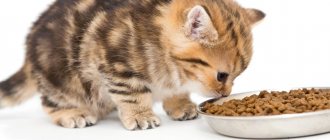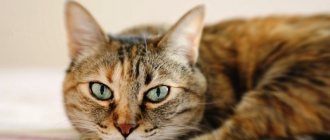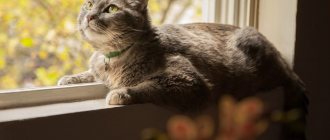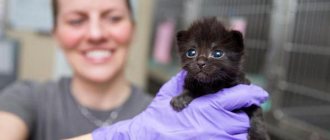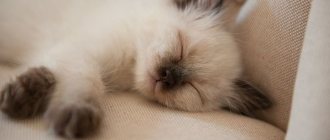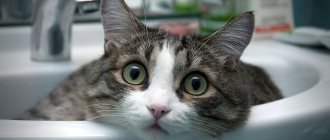It's not entirely clear why cats purr or even how they do it, but you can usually expect your favorite feline to purr when he's feeling content. Purrs are common in cats when they are petted, cuddled in a lap, or sunbathed by a window. Some cats purr simply because they enjoy it. However, cats sometimes purr when they feel bad or in pain.
Therefore, you must pay attention to your cat's mood and physical behavior to determine why she is purring. Moreover, some cats never purr their entire lives, and some cats that once purred stop purring. But why is this? Let's look at why your cat may not purr and discuss what you can do about it.
They just don't like it
Sometimes cats don't purr because they don't want to. But just because your cat isn't purring doesn't mean she's unhappy. It just means they don't want to purr. If your cat usually purrs when you pet her but doesn't purr from time to time, chances are she just won't want to purr at those times. However, if your cat stops purring altogether when you pet her, this could be another reason for the silence.
Image Credit: Paul Hanaoka, Unsplash
Finding the answer
| Question No. 302437 |
Good afternoon In various kinds of tests on punctuation, distributed on the Internet, a phrase from the story by A.P. is often used. Chekhov's “Steppe”: “only the hills were closer, but there was no mill, which remained far back.” The question concerns the need for a comma separating parts of a complex sentence before the conjunction “yes”. In the original there is a comma, but in answers to the dictation the comma is often absent, and it is explained that the particle “only” is common to both parts. Indeed, in Rosenthal there is a similar example where the comma is missing: “In some cases the common element may be a particle (restrictive, intensifying, excretory): There is silence in the air; only a grasshopper creaks on the shore and somewhere a little eagle hums timidly (Ch.).” Is a comma necessary in such constructions, taking into account the norms of the modern Russian language?
Russian help desk response
This example is generally not suitable for testing, since both solutions are possible - in favor of inserting a comma and in favor of its absence.
Hello, please tell me, is the cat purring or purring? If murly kayet, then is it more correct to murly kaya or murly cha? Thank you.
Russian help desk response
Both verbs can be used - purr and purr. The forms of the verb murly kat are murly chet, murly cha (preferable) and murly kaet, murly kaya (acceptable).
Which is correct: the cat is murly cheating or murly is even?
Russian help desk response
Good afternoon Please tell me whether the verb “murly kat” in the future tense (murly knu/ murly knesh/ murly knut) has only a colloquial status, or is this spelling fixed in dictionaries?
Russian help desk response
_ Murly knu, murly knesh_ are the future tense forms of the perfective verb _ murly knut_ (it is not marked in dictionaries). And from the verb _murly to roll_ (imperfect form) it is possible to form only a compound form of the future tense: _I will roll purrs, you will roll purrs_.
How to correctly put the verb “murly kat” into the imperative mood?
Russian help desk response
The form of the imperative mood is _murly kat_ - _murly kai_ and _murly whose_.
Source
They are sick or injured
A cat may purr to relieve stress when it is sick or injured, but more often cats will stop purring altogether until they feel better. Injury can affect your cat's ability to purr, even if she wants to. Damaged nails, dental infections, and even insect bites can cause injury. Many types of illnesses, from major infections to food poisoning, can cause a cat to stop purring.
If your cat isn't purring due to injury or illness, you may notice other signs of discomfort such as whining, vomiting, and lethargy. You can check for injuries by lightly rubbing your cat's body to see if any area is sensitive to touch. Also examine their mouth and teeth. Any signs of illness or injury associated with a lack of purring should be brought to the attention of a veterinarian immediately.
How do cats manage to purr?
There is still no one hundred percent answer to the questions: why cats purr loudly and how they do it.
However, there are several hypotheses regarding the origin of the rumbling process, which are accepted by scientists as possible. The most plausible theory is the presence of a hyoid bone .
Hyoid bone
According to recent research, rumbling occurs due to the presence of a hyoid bone in cats. Rumbling occurs in connection with the emotions experienced by the cat, which provoke the entry of a nerve impulse into the larynx, and it begins to shrink. This sets the said bone in motion when the cat breathes.
This theory is considered the most reliable, since rumbling is not observed in cats with laryngeal paralysis. Moreover, the type of rumbling depends on the shape of this bone.
Thus, domestic cats produce vibrating and pleasant sounds. The purring of a domestic cat is used in some areas of medicine to calm the nervous system and prepare the human body for heavy stress.
In cats, the bone has a triangular shape. In larger predators, for example, lions, the hyoid bone has the shape of a rectangle , which is why the rumbling sound is rougher, bassier and growling.
Lungs and diaphragm
Another theory is the work of the muscles of the diaphragm and ribs . When breathing, sound vibrations of different amplitudes are created. However, this theory can hardly be called reliable, since the intensity of purring in this case would have to change, which does not happen in real conditions.
False ligaments
Another theory is based on the work of the false cords, which are located directly above the vocal cords. According to the theory, rumbling occurs due to changes in pressure in the circulating bloodstream . Thus, vibration occurs in the chest and sound is transmitted to the sinuses.
They're just getting old
Sometimes cats lose energy as they age. Instead, they prefer to use their energy for eating and playing. Even though they don't purr, older cats can be just as happy as younger ones. They simply may not have the energy or means to show you their appreciation and happiness as they used to.
Image Credit: Sleepy Cat, Unsplash
Finding the answer
| Question No. 302437 |
Good afternoon In various kinds of tests on punctuation, distributed on the Internet, a phrase from the story by A.P. is often used. Chekhov's “Steppe”: “only the hills were closer, but there was no mill, which remained far back.” The question concerns the need for a comma separating parts of a complex sentence before the conjunction “yes”. In the original there is a comma, but in answers to the dictation the comma is often absent, and it is explained that the particle “only” is common to both parts. Indeed, in Rosenthal there is a similar example where the comma is missing: “In some cases the common element may be a particle (restrictive, intensifying, excretory): There is silence in the air; only a grasshopper creaks on the shore and somewhere a little eagle hums timidly (Ch.).” Is a comma necessary in such constructions, taking into account the norms of the modern Russian language?
Russian help desk response
This example is generally not suitable for testing, since both solutions are possible - in favor of inserting a comma and in favor of its absence.
Hello, please tell me, is the cat purring or purring? If murly kayet, then is it more correct to murly kaya or murly cha? Thank you.
Russian help desk response
Both verbs can be used - purr and purr. The forms of the verb murly kat are murly chet, murly cha (preferable) and murly kaet, murly kaya (acceptable).
Which is correct: the cat is murly cheating or murly is even?
Russian help desk response
Good afternoon Please tell me whether the verb “murly kat” in the future tense (murly knu/ murly knesh/ murly knut) has only a colloquial status, or is this spelling fixed in dictionaries?
Russian help desk response
_ Murly knu, murly knesh_ are the future tense forms of the perfective verb _ murly knut_ (it is not marked in dictionaries). And from the verb _murly to roll_ (imperfect form) it is possible to form only a compound form of the future tense: _I will roll purrs, you will roll purrs_.
How to correctly put the verb “murly kat” into the imperative mood?
Russian help desk response
The form of the imperative mood is _murly kat_ - _murly kai_ and _murly whose_.
Source
What to do
There is little you can do about the lack of purring other than provide encouragement to your cat if necessary. If they don't seem normal, you should make an appointment with your veterinarian to see if anything can be done to make them feel better. They may start purring again once they feel like themselves. If your cat just doesn't want to purr, all you can do is love her and reward her with petting and cuddling. If they get old, you may just have to live with the lack of purring from now on, but you can still expect the love and attention you've always received.
Tags
purr loudly purrs our purr purr Questions Question of interest.7 questions 7 questions 5 questions 5 questions A cat canEnglish language Russian language Russian language adjectivesEnglish language Russian languagerules of the Russian language Russian language
words dictionaries rules purrs purr article synonym soft words quiet sounds chant time colloquial search for content us commentary heard only cats very onomatopoeic publish site parsing english translation spelling sometimes materials project main cats species mutter option definition do read all our links mursong properties voice many map present health types history
Final thoughts
Everyone loves to hear their cat purr. The sound and sensation of purring usually confirms the fact that they are happy. But just because your cat isn't purring doesn't mean you're doing anything wrong or that she's unhappy about anything. Watch for signs of trouble, but if you don't see any, chances are your cat just isn't interested. How often does your cat purr and do you notice that she doesn't purr when you expect her to? Tell us about your experience by leaving us a comment!
Posted by Christian Adams An American expat living in Metro Manila, Philippines for over a decade, Christian is a lifelong cat lover and the proud father of two rescue cats, Trixie and Chloe. Both girls used to be among the crowds of homeless people who roam the cities and countryside. Three-year-old Trixie was rescued from a litter found under a neighbor's porch, and two-year-old Chloe was brought home by Christian's young son, Henry, who discovered the crying kitten in the parking lot.
Cat massage
There are many guesses why the pet purrs and tramples its owner with its paws. Here are some of them:
- Memories of childhood, or “milk step” - kittens knead their mother with their paws while feeding to quickly obtain milk. This brings them pleasure and is associated in adults with a feeling of comfort, satiety and security.
- Prepares a comfortable place to sleep - tramples the surface on which you are going to sleep for the greatest comfort. The owner's knees may well be suitable for this purpose.
- Gratitude - in this way one can say “thank you” for delicious food, warm shelter, tenderness and affection.
- Therapeutic massage is a common theory that this is how a cat treats its owner from ailments.
- Stress relief – by purring and moving their paws, cats lift their spirits, relax and calm down.
- Unfulfilled sexual instinct - one theory says that if an animal does not have a mate, it may show unambiguous interest.
- Marks its property - cats have glands on their paw pads that secrete a secretion. This is one of the ways to convey to other animals that a person belongs to him.
- Showing trust and love - the pet shows its owner its location, favor, openness and trust. Emphasizes your closeness with a person.
This massage soothes, relaxes and helps relieve stress. But what if claws are used? You can lightly press the cat towards you so that he lies down and stops trampling. You should not scold or drive out an animal if its trust and peace of mind are valuable. It’s better to just put a blanket or pillow on your knees in advance.
Reference! A cat will reflexively retract its claws if you stroke the top of its paws.
